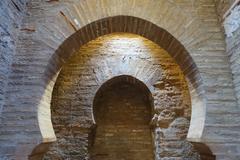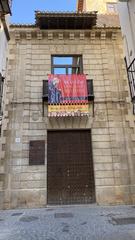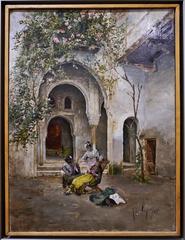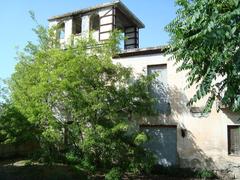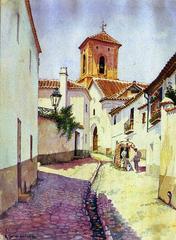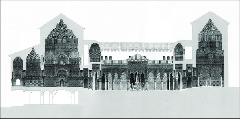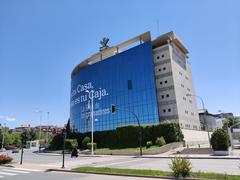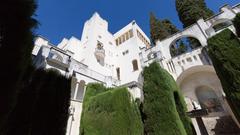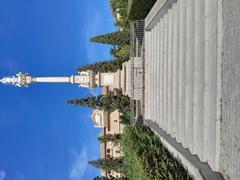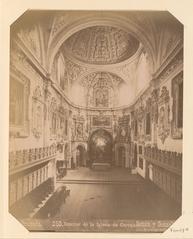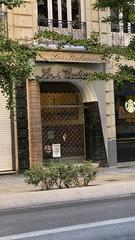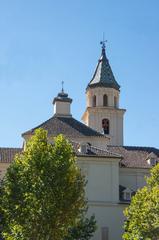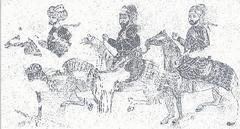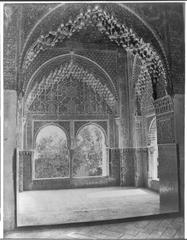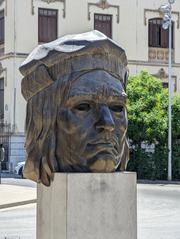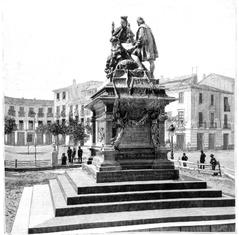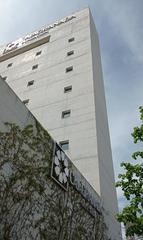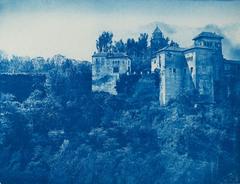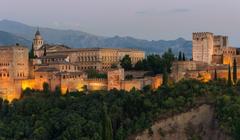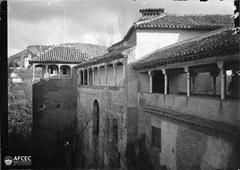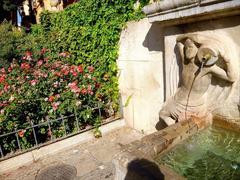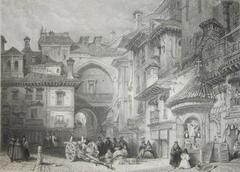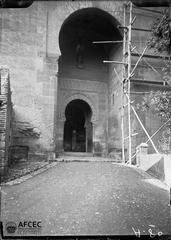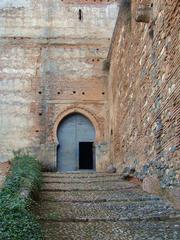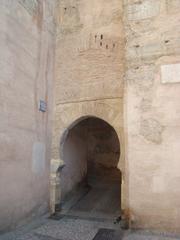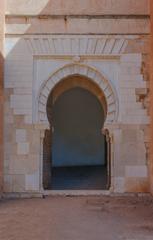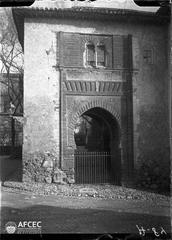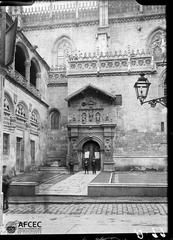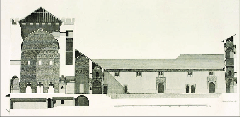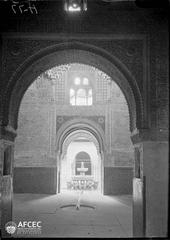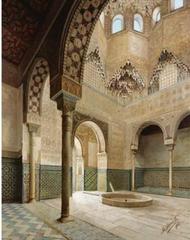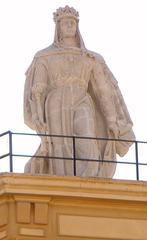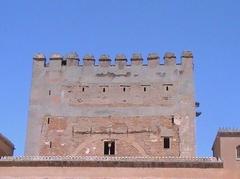Visiting the Monument To The 70 Strike in Granada, Spain: Guide, Tickets, Hours, and Tips
Date: 14/06/2025
Introduction: History and Significance
Set in the lively city of Granada, the Monument to the ‘70 Strike stands as a powerful tribute to the city’s modern social and political history. This evocative site commemorates the pivotal 1970 labor strike, a defining moment when workers—especially from the construction and sugar industries—rallied for fair wages, safer conditions, and democratic freedoms under the oppressive Francoist regime. The monument is more than just a memorial; it is a public testament to the spirit of solidarity and resistance that contributed to Spain’s path toward democracy. Located in the working-class neighborhood of La Chana, it is accessible year-round and free to visit, offering a unique perspective on Granada’s layered heritage (Granada City Council, Bon Traveler, Emma’s Daydream).
Table of Contents
- Historical Context and Monument Creation
- Artistic Features and Symbolism
- Visitor Information
- Visitor Experience & Tips
- Location & Surroundings
- Nearby Attractions
- Thematic Integration: Granada’s Layers
- Cultural & Educational Impact
- FAQs
- Additional Resources & Conclusion
Historical Context and Creation of the Monument
The 1970 Granada strike was a watershed event, marking a bold stand against Francoist repression. Thousands of workers, supported by students and religious figures, united for labor rights, facing severe crackdowns. Although the immediate results were modest, the movement galvanized Spain’s labor activism and contributed to the eventual democratization of the country. The monument, commissioned for the strike’s 40th anniversary, was created with the collaboration of the city and local labor unions. It now hosts annual commemorations, educational programs, and serves as a gathering place for civic engagement (Granada City Council).
Artistic Features and Symbolism
Sculptural Composition
The monument’s centerpiece is a group of life-sized bronze figures, each uniquely posed to represent the diverse participants of the strike—some with raised fists, others bearing banners or tools. The arrangement forms a semi-circle, inviting visitors to step into the scene and reflect on the collective determination and unity of the movement.
Materials and Techniques
Crafted from durable bronze and set upon a robust granite base sourced from local quarries, the monument features intricate details—textured clothing, expressive faces, and realistic gestures. The bronze is left to weather naturally, symbolizing the ongoing relevance of the struggle for justice. Lighting at night highlights the monument’s contours, creating a dramatic and contemplative atmosphere (Granada Monuments Guide).
Inscriptions and Plaques
Around the base, plaques inscribed in both Spanish and English display slogans from the 1970 strike and the names of key leaders. A featured quote emphasizes solidarity, dignity, and hope, making the monument’s message accessible to international visitors.
Visitor Information
Location & How to Get There
The Monument to the ‘70 Strike is located in the La Chana district, northwest of Granada’s historic center. It’s easily reached by foot or by public transport—bus lines SN1 and SN2 from the city center stop nearby. Taxis are a quick alternative, and the area is pedestrian-friendly (Visit Southern Spain).
Opening Hours & Tickets
- Hours: Open 24/7 as an outdoor public space.
- Tickets: No tickets required; admission is free.
Accessibility
The monument is fully accessible, with smooth, paved paths and ramps. Braille plaques and audio guides are available for visually impaired visitors. For detailed information, contact the Granada City Council.
Guided Tours & Educational Resources
While standard tours seldom include the monument, specialized historical walking tours and educational programs do. These can be arranged through local providers; advance booking is recommended. Digital QR codes on-site link to oral histories and archival materials (Emma’s Daydream, European Memories).
Photography & Etiquette
Photography is encouraged, particularly of the monument’s details and setting. Please be respectful during commemorative events—avoid flash and do not disturb participants.
Visitor Experience & Tips
Atmosphere & Setting
The plaza setting is tranquil, with native trees and benches perfect for contemplation. Annual commemorations in spring and December feature speeches, music, and performances.
What to Expect
- Interpretive Plaques: Contextualize the event in both Spanish and English.
- Artistic Elements: Realistic and symbolic bronze sculptures.
- Photo Opportunities: Especially striking in the late afternoon or at night when the monument is illuminated.
- Quiet Reflection: The site is rarely crowded, offering a peaceful contrast to Granada’s busy tourist spots.
Practical Tips
- Best Time to Visit: Spring and autumn offer milder weather and fewer crowds. Early morning or late afternoon visits are ideal.
- Amenities: Cafés and restrooms are available nearby, though not on-site.
- Comfort: Wear comfortable shoes and bring sun protection, especially in summer.
- Safety: The area is safe, but visiting during daylight is recommended for the best experience (Ruralidays, Weather25).
Location & Surroundings
La Chana is a vibrant, authentic Granada neighborhood. The monument is within walking distance of major sites, including the Alhambra, the Albaicín, and the city center (Lonely Planet Granada Guide). Informational panels and digital maps guide visitors to related locations, like the former labor union headquarters and the Granada Social History Museum.
Nearby Attractions
- Alhambra: Moorish palace and fortress complex (Alhambra Palace).
- Albaicín: Historic Moorish quarter (Albaicín Neighborhood).
- Granada Cathedral: Spanish Renaissance architecture (Nomadic Matt).
- Paseo de los Tristes: Picturesque riverside promenade.
- Tapas Bars & Flamenco: Enjoy local traditions in nearby districts (Ruralidays).
Thematic Integration: Understanding Granada’s Layers
Adding the Monument to the ‘70 Strike to your itinerary provides insight into Granada’s 20th-century history, complementing visits to its medieval and Renaissance landmarks. The monument highlights a crucial era of civic struggle, broadening your understanding of the city’s identity beyond its architecture and art (The World Was Here First, Planetware).
Cultural & Educational Impact
Schools and universities regularly organize visits to the monument, using it as a springboard for workshops and discussions on social justice and civic activism. The site remains a hub for public commemorations and a symbol of local resilience (Granada City Council).
Frequently Asked Questions (FAQs)
Q: What are the visiting hours?
A: The monument is open 24/7 as an outdoor public space.
Q: Is there an entrance fee?
A: No, it’s free to visit.
Q: Are guided tours available?
A: Specialized history tours may include the monument; check with local guides.
Q: Is the site wheelchair accessible?
A: Yes, with smooth paths and ramps. Some nearby streets may be uneven.
Q: When are commemorative events held?
A: Annual gatherings are typically in spring and December.
Q: Are restrooms available at the site?
A: No, but nearby cafés and public facilities are accessible.
Visuals and Media
- Include high-quality photos of the monument, close-ups of plaques, and nighttime illumination.
- Use alt tags such as “Bronze figures at the Monument to the ‘70 Strike in Granada” and “Night lighting of the 1970 Strike Monument.”
- Interactive maps and virtual tours can further enhance the visitor experience.
Sample Granada Itinerary Including the Monument
Day 1:
- Morning: Alhambra
- Afternoon: Albaicín, Cathedral
- Evening: Tapas and flamenco
Day 2:
- Morning: Science Park or Monastery of San Jerónimo
- Afternoon: Monument to the ‘70 Strike and La Chana
- Evening: Street art or sunset at Mirador de San Nicolás
Additional Resources
- Bon Traveler
- Granada City Council
- Granada Monuments Guide
- Visit Southern Spain
- Visit Andalucia
- The World Was Here First
- Planetware
Summary and Final Tips
Visiting the Monument to the ‘70 Strike in Granada is a meaningful way to connect with the city’s recent history and the enduring fight for social justice. The monument is free, accessible, and set in a vibrant neighborhood, making it an ideal complement to Granada’s iconic sites. For the richest experience, visit during daylight, explore nearby attractions, check for commemorative events, and use digital resources for deeper understanding. By including this landmark in your itinerary, you not only honor the legacy of Granada’s workers but also gain a fuller appreciation of the city’s complex, evolving identity (Granada itinerary ideas).
For up-to-date information and self-guided tours, download the Audiala app and follow Granada’s official tourism sites.

